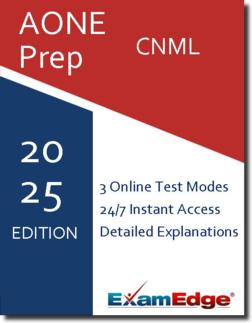AONE CNML Practice Tests & Test Prep by Exam Edge - Blogs
Based on 32 Reviews
- Real Exam Simulation: Timed questions and matching content build comfort for your AONE CNML test day.
- Instant, 24/7 Access: Web-based AONE Nurse Manager and Leader Certification practice exams with no software needed.
- Clear Explanations: Step-by-step answers and explanations for your AONE exam to strengthen understanding.
- Boosted Confidence: Reduces anxiety and improves test-taking skills to ace your AONE Nurse Manager and Leader Certification (CNML).

Exam Edge Blogs for AONE Nurse Manager and Leader Certification

The Best Certification for Nurse Managers: Top Picks & Benefits
While nurses are known as caretakers and versed medical professionals, they are, though less famously, often also great leaders and managers. The j...
Read More
Nurse Manager Certification Requirements: All You Need to Know
As we progress in our careers, it is only normal to be looking for better, higher-paying, advanced roles. The nursing field certainly has opportunitie...
Read More
Tips to Prepare for the AONL CNML Certification Exam
One of the many avenues nurses have to advance their career and expand their job prospects is through becoming a nurse leader. For this, you’ll ...
Read MoreExam Edge Blogs for AONE Nurse Manager and Leader Certification

The Best Certification for Nurse Managers: Top Picks & Benefits
While nurses are known as caretakers and versed medical professionals, they are, though less famously, often also great leaders and managers. The j...
Read More
Nurse Manager Certification Requirements: All You Need to Know
As we progress in our careers, it is only normal to be looking for better, higher-paying, advanced roles. The nursing field certainly has opportunitie...
Read More
Tips to Prepare for the AONL CNML Certification Exam
One of the many avenues nurses have to advance their career and expand their job prospects is through becoming a nurse leader. For this, you’ll ...
Read More

